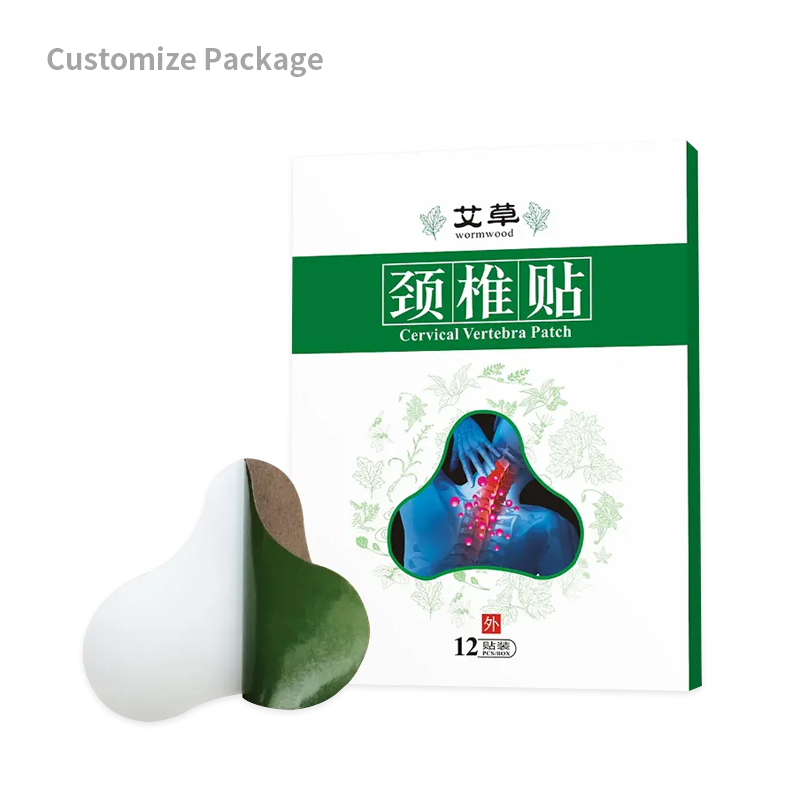What Should I Consider When Choosing a Cervical Vertebra Pain Relief Patches Supplier?
Selecting the right supplier for cervical vertebra pain relief patches is crucial for ensuring product quality, regulatory compliance, and customer satisfaction. This comprehensive guide will explore the key factors to consider when choosing a cervical vertebra pain relief patches supplier, providing you with actionable insights to make an informed decision.

Importance of Choosing the Right Supplier
The success of your product hinges on the quality and reliability of your supplier. An experienced and reputable cervical vertebra pain relief patches supplier can help you navigate the complexities of production, ensure regulatory compliance, and deliver high-quality products that meet customer expectations.
Key Considerations When Choosing a Supplier
1. Experience and Expertise
When selecting a cervical vertebra pain relief patches supplier, prioritize their experience and expertise in the industry. Suppliers with a proven track record are more likely to understand the nuances of production and regulatory requirements.
- Experience: Look for suppliers with several years of experience in manufacturing cervical vertebra pain relief patches.
- Expertise: Evaluate their expertise in developing and producing medical-grade patches, including their knowledge of active ingredients and formulation techniques.
2. Manufacturing Capabilities
Assess the supplier's manufacturing capabilities to ensure they can meet your production needs and quality standards.
- Production Capacity: Determine if the supplier can scale production to meet your demand, whether for a small batch or large-scale orders.
- Technology and Equipment: Check if the supplier uses advanced technology and modern equipment to ensure consistent product quality.
3. Quality Control
Quality control is paramount in producing effective and safe cervical vertebra pain relief patches.
- Quality Assurance Processes: Inquire about the supplier's quality assurance processes, including their adherence to Good Manufacturing Practices (GMP).
- Testing and Certification: Ensure the supplier conducts rigorous testing for each batch and holds relevant certifications such as ISO and FDA approval.
4. Customization Options
Customization options are essential if you want to create unique cervical vertebra pain relief patches tailored to your brand.
- OEM and Private Label: Determine if the supplier offers OEM (Original Equipment Manufacturer) and private label services. OEM allows for complete customization, while private labeling involves branding an existing product.
- Customization Flexibility: Assess the supplier’s flexibility in terms of product design, ingredients, packaging, and branding.
5. Regulatory Compliance
Ensure the supplier complies with all relevant regulations and standards in your target markets.
- Regulatory Knowledge: The supplier should be knowledgeable about the regulatory requirements in different regions, including the USA, EU, and Asia.
- Documentation and Support: Verify that the supplier can provide necessary documentation and support for regulatory approval processes.
6. Pricing and Payment Terms
Consider the supplier's pricing structure and payment terms to ensure they align with your budget and financial plans.
- Transparent Pricing: Look for suppliers with transparent pricing structures, including clear information on costs related to production, customization, and shipping.
- Payment Terms: Discuss payment terms and conditions, including deposit requirements, payment schedules, and any available financing options.
7. Communication and Support
Effective communication and support are vital for a smooth collaboration with your supplier.
- Responsiveness: Evaluate the supplier’s responsiveness to inquiries and their ability to provide timely updates.
- Customer Support: Ensure the supplier offers comprehensive customer support, including technical assistance and after-sales service.
Steps to Evaluate a Cervical Vertebra Pain Relief Patches Supplier
1. Research and Shortlist Potential Suppliers
Begin by conducting thorough research to identify potential suppliers. Use online directories, industry associations, and trade shows to compile a list of reputable suppliers.
2. Request Samples and Evaluate Quality
Request samples from shortlisted suppliers to evaluate the quality of their cervical vertebra pain relief patches. Assess factors such as patch adhesion, comfort, and effectiveness.
3. Conduct Facility Visits
If possible, visit the supplier’s manufacturing facilities to assess their operations, technology, and quality control processes firsthand.
4. Check References and Reviews
Seek references from other clients and read online reviews to gauge the supplier’s reliability and customer satisfaction levels.
5. Negotiate Terms and Finalize Agreement
Negotiate terms, including pricing, payment schedules, and delivery timelines. Once you are satisfied, finalize the agreement and initiate the partnership.
Related Questions and Answers
1. What are the key ingredients in cervical vertebra pain relief patches?
Common ingredients include menthol, camphor, capsaicin, and lidocaine. These ingredients provide cooling, heating, and numbing effects to relieve pain.
2. How long does it take to develop a custom cervical vertebra pain relief patch?
The development timeline can vary from six months to a year, depending on factors such as product complexity, regulatory approvals, and production capacity.
3. Can I include natural ingredients in my custom cervical vertebra pain relief patches?
Yes, many suppliers offer the option to include natural ingredients like essential oils and herbal extracts. Discuss your preferences with the supplier to ensure feasibility.
4. How do I ensure my cervical vertebra pain relief patches comply with regulations?
Work with a supplier knowledgeable about regulatory requirements in your target markets. They should provide necessary documentation and support for regulatory approvals.
5. What is the difference between OEM and private label cervical vertebra pain relief patches?
OEM involves creating a new, custom product from scratch, while private labeling involves branding an existing product with your brand’s logo and packaging.
Conclusion
Choosing the right cervical vertebra pain relief patches supplier is critical to the success of your product. By considering factors such as experience, manufacturing capabilities, quality control, customization options, regulatory compliance, pricing, and support, you can make an informed decision that ensures high-quality products and satisfied customers. Follow the outlined steps to evaluate potential suppliers and establish a successful partnership for your brand.






